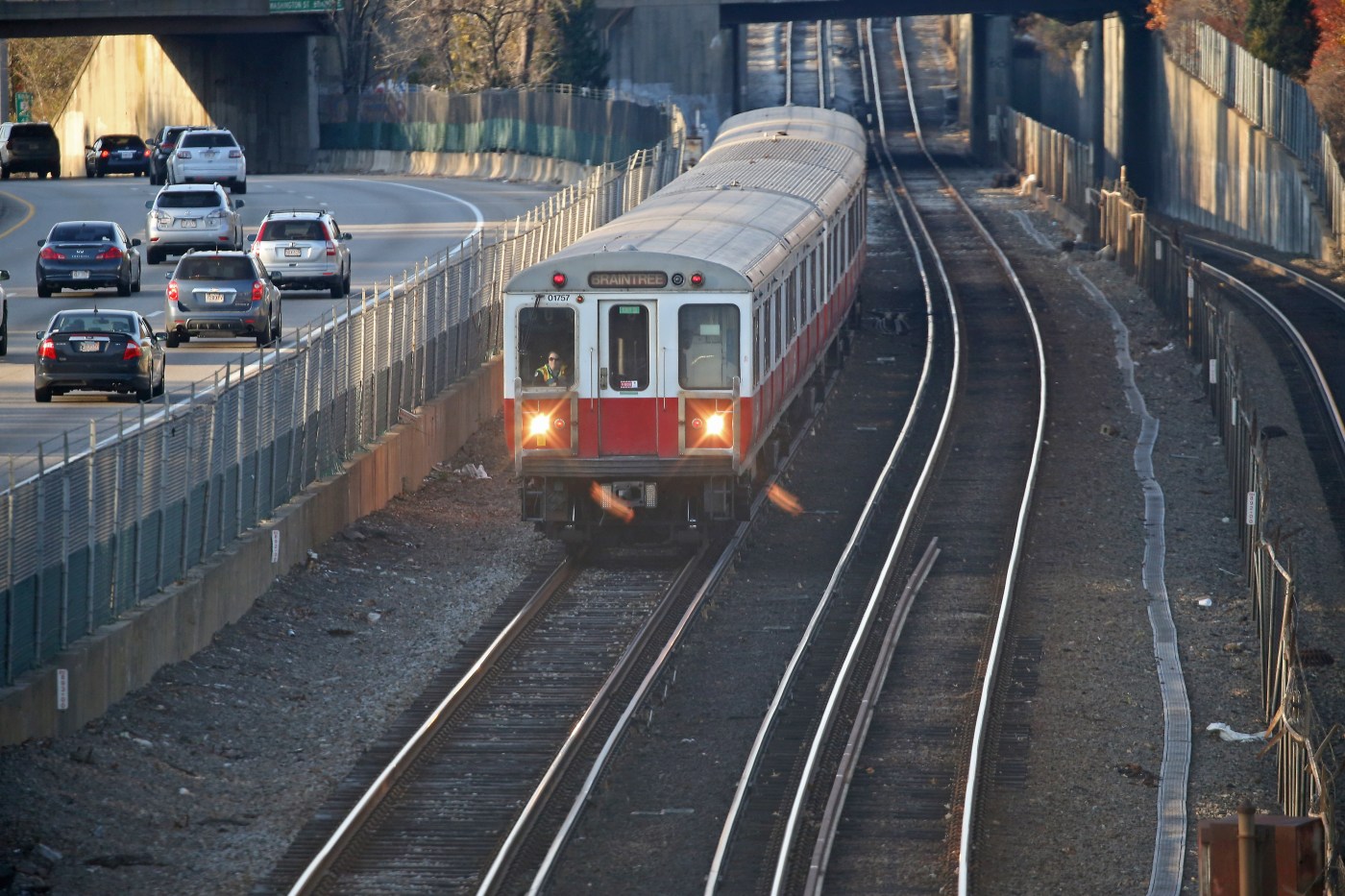
MBTA budget gap could climb to nearly $1 billion by 2029
The MBTA’s budget gap could grow to $652 million in the next fiscal year, when pandemic relief funds that have been helping the agency offset its significant loss in fare revenue and high cost of federally mandated safety fixes run out.
The T’s financial outlook becomes more dire each of the next five years, capped by a budget deficit that could hit nearly $1 billion by fiscal year 2029, staffers said at a Friday morning Audit and Finance subcommittee meeting.
“We now stare at the fiscal cliff,” MBTA Chief Financial Officer Mary Ann O’Hara said, later adding, “Difficult decisions must be made.”
An aggressive hiring push aligned with the agency’s “ambitious” safety and service investments mandated, in part, by Federal Transit Administration directives, coupled with persistently low ridership numbers that are keeping fare revenue far below what was taken in before the pandemic, are among the factors driving the projected budget shortfalls over the next five years, the presentation shows.
The pro forma projections are largely dependent on future fare revenue, hiring and actual spending, O’Hara said, pointing to gaps that range from best-case scenarios of $567 million in fiscal year 2025, which begins July 1, and $799 million by FY29, to as high as $652 million and $902 million, in those respective fiscal years.
The day’s presentation, for example, points to a net increase in headcount of roughly 730 positions, leading to higher budgeted salary costs.
The financial outlook could improve for the upcoming fiscal year, however, as the T anticipates using the remainder of its deficiency, or rainy day, funds to bring the projected budget gap down to roughly $182 million, O’Hara said.
T staffers are also waiting to see how the governor’s pledge to double the agency’s operations budget, as laid out in her State of the State address this week, plays out in the Legislature, and they anticipate having a better sense of how the numbers could impact pro forma projections ahead of next week’s Board of Directors vote.
While much of the day’s presentation was dedicated to the T’s five-year outlook, staffers and board members also pointed to how its so-called “legacy debt” was contributing to today’s financial woes.
That outstanding debt was brought on by the $24 billion Big Dig highway project from the 1990s, and sales tax revenue that “grossly underperformed expectations” in the first 20 years of the “forward funding” formula the Commonwealth designed in 2000 to fix what was perceived as “ungoverned” spending by the MBTA, a board presentation shows.
The Big Dig obligation of $600 million accounts for roughly 37% of the T’s outstanding debt, and will likely take a decade to pay off with interest, the presentation states.
Not helping matters, board member Thomas McGee said, was the decision to lump capital expenses into the T’s operating budget, which he described as a “big driver of the debt.”
Board Chair Thomas Glynn also suggested that a lower workforce compared to riders who use the T, in terms of what he sees today versus what he saw when he was general manager from 1989-91, contributed to the agency’s current challenges.
Related Articles
MBTA receives $200.8M from the millionaire’s tax to address infrastructure, safety, hiring
A very trying Tuesday on the T
Smoke, electrical problems disrupt Red, Orange Lines
300-plus buyouts paid out to MBTA workers, including those let go
Man arrested after ‘harassing’ MBTA passengers with two rats
During his tenure, Glynn said, the T had about 650,000 daily passengers and 7,000 employees. Until the recent hiring blitz, there were roughly 6,000 employees handling about 1.3 million daily passengers, a number that he said doubled largely because of the Big Dig expansion.
“That sums up a lot of these dynamics,” he said.
McGee added, “The challenges and the problems the system has faced over the years directly relate to the lack of employees to get the job done.”
A gloomy financial projection partly driven by low fare revenue was bookended, however, by an update on a low-income fare proposal, based on a state budget request by Gov. Maura Healey, that would cut fares in half for roughly 62,000 additional riders by the spring or summer.
The cost to implement the program, if approved by the board in March, would cost between $23-$26 million next fiscal year, an amount that is projected to grow to $52-$62 million by FY29.
While heavily touted by some elected officials and advocates as an equity measure, Glynn noted that low-income fares have been shown to have “mixed” success.


